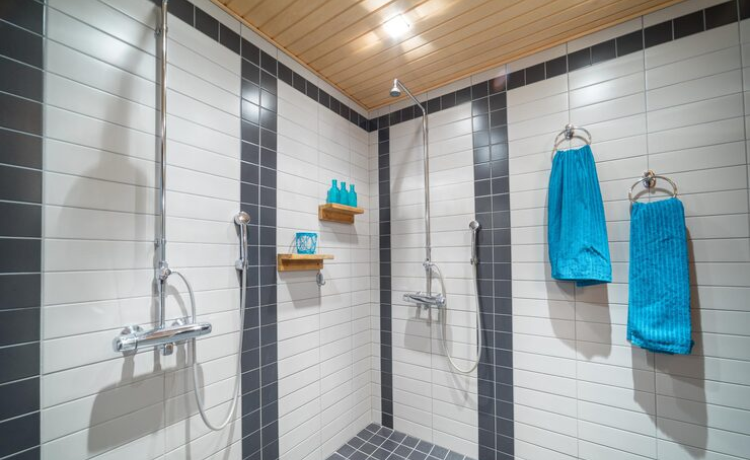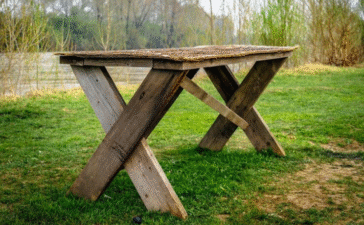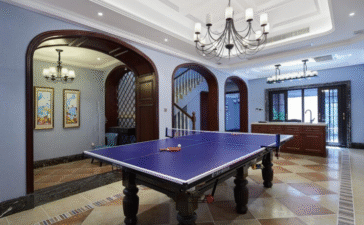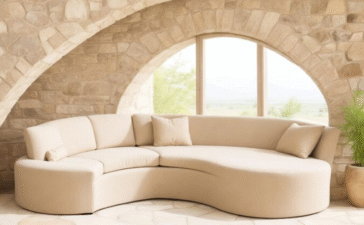The humble bathroom stall is often overlooked, yet it is a cornerstone of public and commercial space. It is a private sanctuary in a public world, a small space dedicated to personal needs, privacy and hygiene. Whether in busy airports and shopping malls or in quiet offices and restaurants, the design, functionality and cleanliness of toilet cubicles have a significant impact on our daily lives. Even if we don’t consciously think about it, a poorly designed or unkempt cubicle can leave a lasting negative impression, affecting the reputation of a business and the comfort of visitors.
The discussion about toilet cubicles continues to evolve. Facility managers, architects and business owners are now recognizing that these partitions are more than just functional partitions. They are an integral part of interior design, reflect a brand’s commitment to the user experience and are an important component of public health and safety. This guide explores all facets of the restroom cubicle, from expert design knowledge and hygiene protocols to its surprising social and cultural significance. By understanding the complexities of restroom design, maintenance and regulations, you can ensure that your facilities meet the highest standards of comfort, safety and user satisfaction.
Expert Insights into Bathroom Stall Design
Creating a public restroom that is both functional and inviting starts with the design of it. This process involves balancing aesthetics with practical considerations to ensure the space serves its users effectively for years to come. Thoughtful design goes beyond simply choosing a color; it encompasses durability, user privacy, and overall safety.
Key Design Considerations for Bathroom Stalls
When selecting toilet cubicles, three core factors should guide your decisions: durability, privacy, and safety. Durability is paramount, especially in high-traffic environments like schools, stadiums, and public transit hubs. The materials must withstand constant use, potential vandalism, and frequent cleaning without degrading. Privacy is another non-negotiable aspect. Users expect a secure, private space, and design elements like full-height partitions and minimal gaps between panels are becoming standard. Finally, safety must be integrated into the design, from hardware that is easy to operate in an emergency to materials that meet fire safety codes.
The choice of material directly impacts these three considerations. Laminated panels, often referred to as plastic laminate, are a popular and cost-effective option for low to moderate traffic areas. They offer a wide range of colors and patterns but are more susceptible to water damage. For more demanding environments, solid plastic (HDPE) and phenolic core partitions provide superior resistance to moisture, graffiti, and impact. Metal options, such as stainless steel and powder-coated steel, offer a sleek, modern aesthetic and excellent durability, making them a preferred choice for upscale establishments and high-traffic venues seeking a premium look.
What’s Trending in Bathroom Stall Designs?
Recent trends in toilet cubicle design reflect broader shifts toward sustainability, modern aesthetics, and brand personalization. There is a growing demand for sustainable materials, with manufacturers offering partitions made from recycled content or rapidly renewable resources. These eco-friendly options allow businesses to align their facilities with their corporate social responsibility goals without sacrificing quality.
In terms of aesthetics, minimalistic and modern designs are prevailing. Clean lines, concealed hardware, and a neutral color palette create a sense of spaciousness and sophistication. European-style full-height partitions, which extend from floor to ceiling, are gaining popularity for the superior privacy and sleek appearance they provide. Businesses are also using toilet cubicles as an extension of their brand identity. Custom designs, incorporating company colors, logos, or unique patterns, help create a cohesive and memorable experience for customers and employees alike.
Commercial Bathroom Stall Requirements
Designing commercial restrooms involves more than just aesthetics; it requires adherence to specific regulations and a focus on practical functionality. Americans with Disabilities Act (ADA) compliance is a legal requirement that ensures restrooms are accessible to everyone. This includes specific dimensions for stalls, grab bars, and clear floor space for maneuverability.
Space optimization is another critical challenge, particularly in high-traffic areas. The layout must facilitate a smooth flow of people, preventing congestion and long wait times. This might involve using compact stall designs, strategically placing fixtures, and ensuring there are enough stalls to meet demand. Balancing these requirements with a comfortable and private user experience is the hallmark of well-designed commercial restrooms.
The Hygiene Factor: Keeping Bathroom Stalls Clean
A clean restroom is a direct reflection of a facility’s overall standards. No matter how well-designed a bathroom is, poor hygiene will undermine the user experience. Maintaining cleanliness in toilet cubicles requires a combination of smart material choices, rigorous cleaning protocols, and consistent maintenance.
Materials for Easy Maintenance
The choice of material for bathroom stalls plays a significant role in how easy they are to clean and maintain. Non-porous surfaces are ideal, as they do not absorb moisture or harbor bacteria. Compact laminate, solid plastic (HDPE), and phenolic partitions are excellent choices because they are resistant to water, mold, and mildew. Their smooth surfaces can be easily wiped down, and they can withstand harsh cleaning chemicals without discoloration or damage. Stainless steel is another hygienic option, prized for its non-porous nature and resistance to corrosion.
Best Practices for Cleaning Bathroom Stalls
In high-traffic environments, daily cleaning is essential. A comprehensive cleaning protocol should include disinfecting all surfaces, such as doors, handles, locks, and partition walls. It’s crucial to use appropriate cleaning agents that effectively kill germs without damaging the stall materials. To maintain hygiene without disrupting users, cleaning should be scheduled during off-peak hours whenever possible. For facilities that are open 24/7, a system of closing off small sections for cleaning can minimize inconvenience. Posting a cleaning log in a visible location also builds trust and reassures users that the facility is well-maintained.
Importance of Regular Maintenance
Regular maintenance is key to ensuring the long-term durability and cleanliness of bathroom stalls. This involves more than just daily cleaning. Scheduled maintenance checks should be conducted to inspect for loose hardware, damaged panels, or malfunctioning locks. Addressing these minor issues promptly can prevent them from becoming major problems. Dealing with tough stains and graffiti requires specific techniques. For graffiti, non-abrasive cleaners and specialized removal products can be effective on resistant materials like solid plastic or phenolic. Having a plan in place for these challenges ensures that the stalls remain in pristine condition.
The Social Dynamics of Bathroom Stalls
Beyond their practical function, toilet cubicles serve as unique social spaces. They are sites of personal expression, private refuge, and sometimes, social commentary. Understanding these social dynamics provides a fascinating glimpse into human behavior and the evolving role of public restrooms.
The Rise of Graffiti and Its Cultural Significance
Graffiti in toilet cubicles, sometimes referred to as “latrinalia,” is a form of expression that dates back centuries. From ancient Roman latrines to modern-day dive bars, people have used these private spaces to leave their mark. This graffiti can range from simple tags and drawings to elaborate poems, political statements, and philosophical musings. While often considered vandalism, restroom graffiti can also be seen as a raw and uncensored reflection of societal views. It provides a unique window into the thoughts, fears, and desires of a community, capturing personal expressions that might not be shared in more public forums.
Toilet cubicles as a Space for Solitude
In our hyper-connected world, finding a moment of solitude can be a challenge. For many, the toilet cubicle has become an unlikely sanctuary. The emerging trend of “bathroom camping,” particularly among younger generations, highlights this search for a private retreat. Individuals seek out toilet cubicles for brief moments of solitude to escape the pressures of work, social gatherings, or the constant stimulation of modern life. It’s a place to take a deep breath, check messages, or simply be alone with one’s thoughts. This underscores the importance of creating restroom environments that feel safe, private, and comfortable, acknowledging their role in supporting mental well-being.
Ensuring Privacy and Comfort in Public Restrooms
Privacy is a fundamental expectation in a public restroom. The design and construction of toilet cubicles are critical in meeting this need and ensuring users feel comfortable and secure.
How toilet cubicles Provide Essential Privacy
The primary function of a bathroom stall is to provide a visual and auditory barrier. Privacy standards in public restrooms have evolved, with a growing emphasis on minimizing gaps around doors and between panels. Full-height partitions, which extend from the floor to the ceiling, offer the highest level of privacy by eliminating sightlines and reducing sound transmission. The quality of the hardware, including locks and hinges, also contributes to a sense of security. A sturdy, reliable lock assures the user that their privacy is protected.
Addressing Privacy Concerns in High-Use Areas
In high-use areas, maintaining privacy and comfort can be challenging. Overcrowding and noise can create a stressful environment. Solutions include using sound-dampening materials for partitions and designing layouts that create a buffer between the stalls and the main sink area. Ensuring adequate ventilation also enhances comfort by controlling odors and maintaining air quality. In overcrowded restrooms, a well-designed queueing system and clear signage can help manage traffic flow and reduce the feeling of being rushed, allowing users to maintain a sense of personal space.
Regulatory Standards for Bathroom Stalls
Commercial toilet cubicles are subject to strict regulatory standards to ensure they are safe and accessible for everyone. These regulations are not just guidelines; they are legal requirements that must be met.
ADA Compliance and Accessibility Standards
The Americans with Disabilities Act (ADA) outlines specific requirements for the design and construction of public restrooms. These standards mandate the inclusion of at least one wheelchair-accessible stall in every restroom. Key regulations dictate the minimum dimensions of the stall, the clear floor space required for maneuverability, the height and placement of grab bars, and the force needed to operate the door and lock. Adhering to these standards is essential for creating an inclusive environment that accommodates all users.
Safety Standards in toilet cubicles Construction
In addition to accessibility, building codes also address the safety of toilet cubicles. These codes may specify requirements for fire resistance of materials, the structural integrity of the partitions, and the use of hardware that allows for emergency access. For example, some regulations require stall locks that can be opened from the outside by facility staff in case of a medical emergency. Following these safety standards is crucial for protecting users and mitigating liability for the facility owner.
Also Check: “bathroom chandeliers“
Why the Right Bathroom Stall Matters
A stroll through the world of toilet cubicles reveals their multifaceted significance. They are not just functional dwellings, but an essential part of the design, hygiene and social fabric of our public spaces. From the durability of the materials and the elegance of the design, to the rigorous maintenance and guarantee of privacy, every detail contributes to the overall user experience. Investing in high-quality, well-designed and properly maintained toilet cubicles is an investment in comfort, safety and brand reputation. By prioritizing these elements, businesses and facility managers can create restrooms that leave a positive and lasting impression on every visitor.
FAQs
What is the best material for toilet cubicles in high-traffic areas?
For high-traffic areas, the best materials are those that offer superior durability, moisture resistance, and ease of maintenance. Solid plastic (HDPE), phenolic core, and stainless steel are top choices. Solid plastic is highly resistant to impact, graffiti, and moisture, making it ideal for schools and parks. Phenolic partitions are incredibly dense and durable, suitable for environments with heavy use and potential for vandalism. Stainless steel provides a premium look combined with excellent durability and hygienic properties, often used in airports and upscale venues.
How often should toilet cubicles be cleaned?
The cleaning frequency for bathroom stalls depends on the level of traffic. In high-traffic environments like stadiums, airports, and busy restaurants, stalls should be checked and cleaned multiple times throughout the day. A deep clean, including disinfection of all surfaces, should be performed at least once daily. In lower-traffic settings like small offices, a thorough daily cleaning may be sufficient. The key is to maintain a consistently high level of hygiene.
Are there any eco-friendly toilet cubicle options?
Yes, the demand for sustainable building materials has led to the development of several eco-friendly bathroom stall options. Many manufacturers now offer partitions made from recycled materials, such as solid plastic (HDPE) with high post-consumer recycled content. Other options include materials sourced from rapidly renewable resources or those that are certified by organizations like the Forest Stewardship Council (FSC). Choosing these materials can contribute to green building certifications like LEED.
Why is bathroom graffiti so prevalent, and is it legal?
Bathroom graffiti, or “latrinalia,” is prevalent because stalls offer a unique combination of privacy and a public audience. It provides an anonymous platform for personal expression, social commentary, or simple mischief. While it can be a fascinating cultural artifact, creating graffiti on public or private property without permission is considered vandalism and is illegal. Facility owners can combat it by using graffiti-resistant materials and implementing prompt cleaning and maintenance protocols.
How do I ensure my business’ toilet cubicles are ADA compliant?
To ensure ADA compliance, you must follow the specific design guidelines outlined in the Americans with Disabilities Act Standards for Accessible Design. This includes providing at least one wheelchair-accessible stall of a specific size (typically 60 inches wide and 56-59 inches deep), installing grab bars at the correct height and position, ensuring the door and lock are operable with minimal force, and providing adequate clear floor space. It is highly recommended to consult with an architect or a certified ADA consultant during the design phase to ensure all requirements are met.












